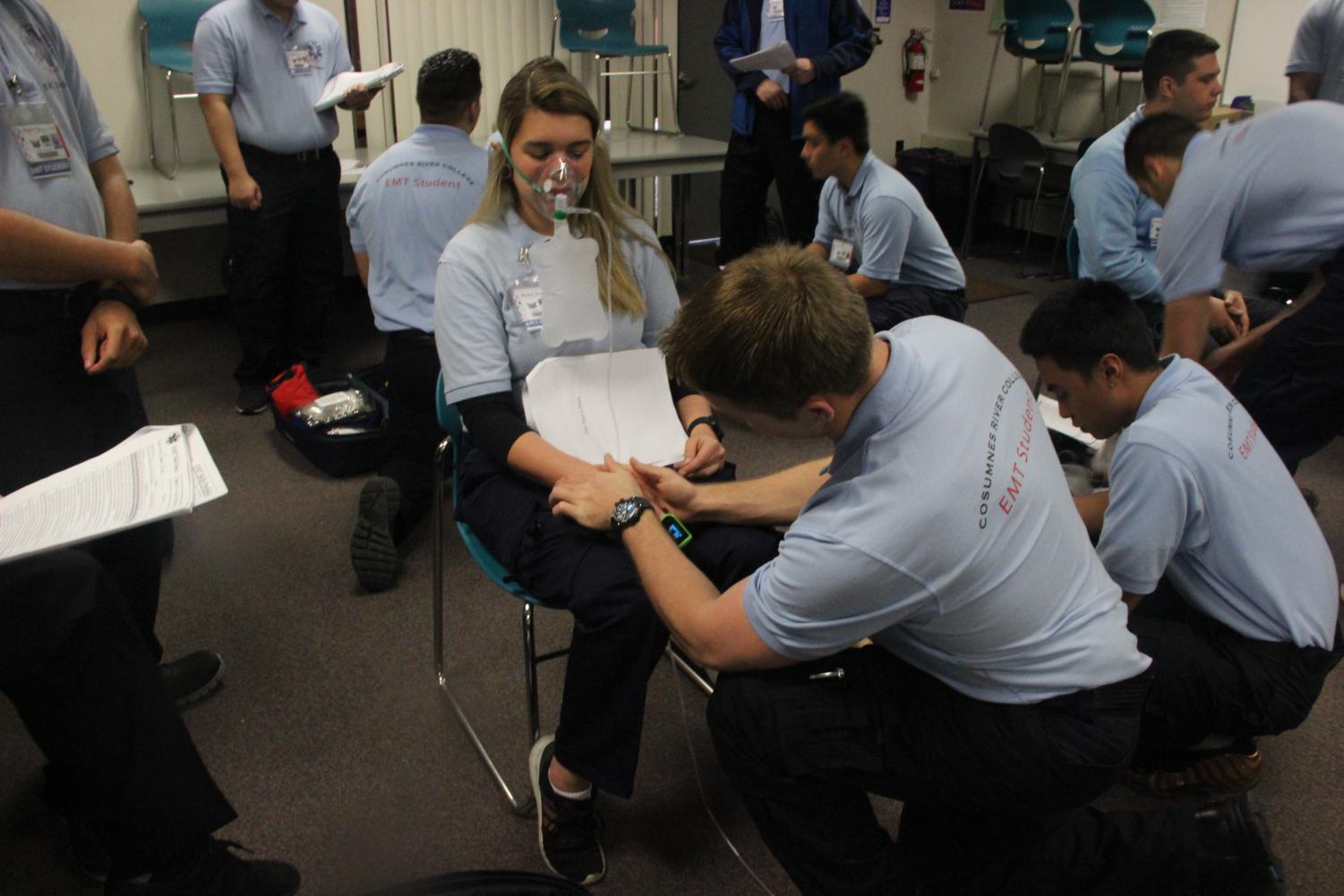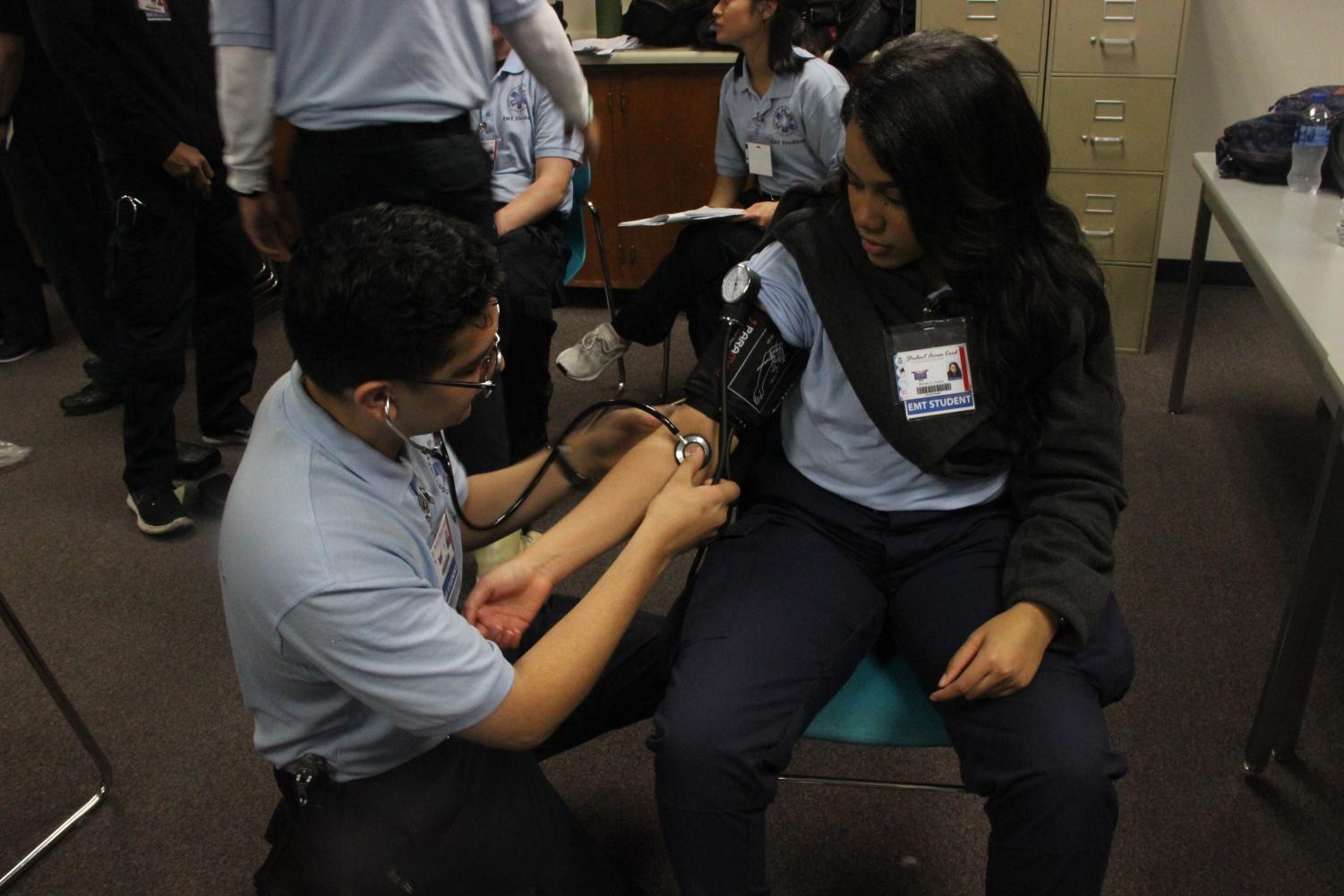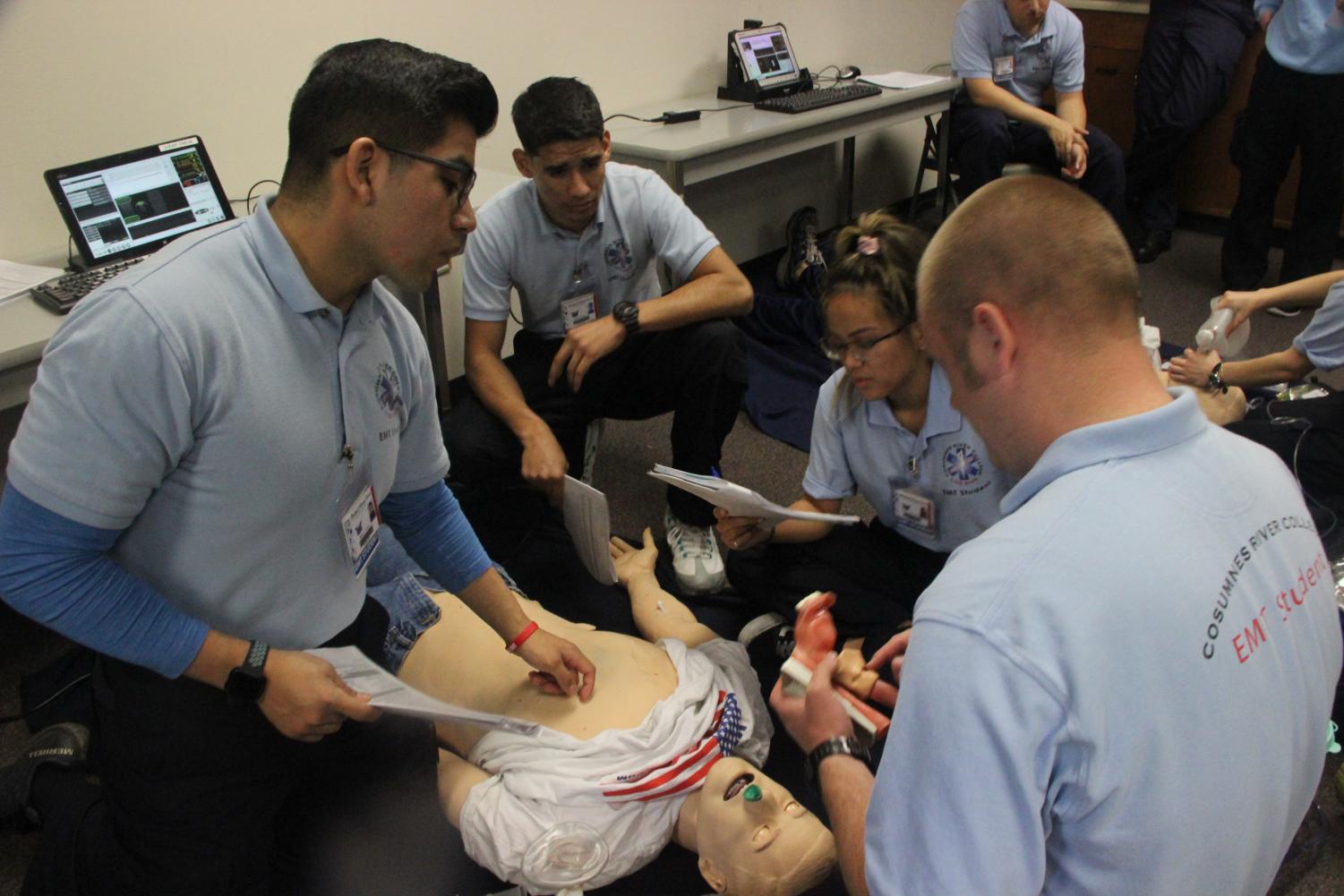Students take on 7.5 unit class
The Medical Technology program seeks to bring real world experience into the classroom.
The Emergency Medical Technology program at Cosumnes River College provides students with the skills and expertise to practice for certification as an Emergency Medical Technician in California.
As a pre-employment requirement, students must complete over 200 hours of state minimum lecture, lab, and clinical work in order to become a certified EMT.
Emergency Medical Services Professor Matthew McHugh said that because the class is structured at 7.5 units, he recommends students not to take other classes because of the extensive training that is required in class.
“There are six shifts on an ambulance and in an emergency room which totals 60 hours on top of classwork,” said McHugh.
Manuel Alvarez, a 24-year-old fire technology major, said the class has provided the basic fundamentals needed in building a foundation for him to carry on to further programs.
Twenty-two-year-old biology major Moriah Guidry, who plans on continuing her education in the medical field as a physician, said the instructors integrate their experiences into the program which gives students a real world approach to their studies.
“I’m planning on going into medical school after I graduate and I need thousands of healthcare hours before I apply,” said Guidry. “I was expecting the class to be hard but it has helped me to become a critical thinker to any emergency situation that will need my attention.”
McHugh said once the students have completed all program requirements, they’ll be able to apply for available positions at various healthcare facilities and fire departments.
“When the students finish the course and pass national testing they become certified and can enter the workforce in less than two months,” said McHugh. “By the end of the course, students will have the opportunity and access to hundreds of available jobs.”
Twenty-one-year-old EMT student Lydia Estrada said she appreciates McHugh for the time and energy that he dedicates to his students by making sure they understand everything so they are confident when they are actively demonstrating the skills they’ve learned.
Students who have a passion for emergency medicine are encouraged by McHugh to start enrolling by end of May because they do not offer classes during the summer.
McHugh said that the EMT course starts the third week of August and is on Tuesday and Thursday from 12 noon until 4:35 p.m. or at night from 5 p.m. until 9:35 p.m. There are also some Wednesday classes in the term.
The EMT classroom is conducted in the Technology building in room 115 and is located behind the Learning Resource Center.
For more information, please visit the EMT training program’s website: http://www.crcems.us.



